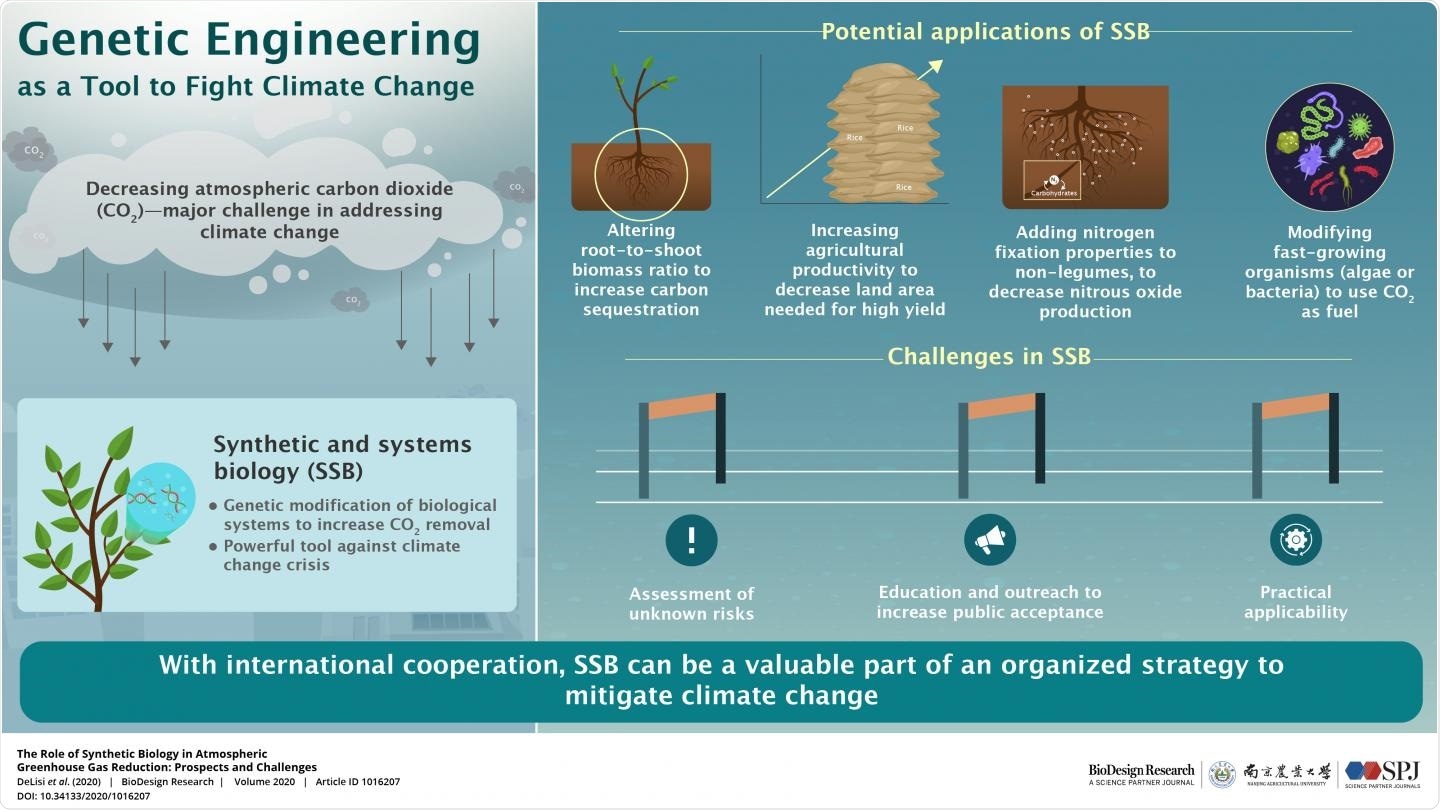Climate change has become a crucial issue in the world. But in spite of international agreements to combat climate change, global temperatures continue to rise and greenhouse gas emissions continue to increase.

With international cooperation, Synthetic and systems biology (SSB) can be a valuable part of an organized strategy to mitigate climate change. Image Credit: BioDesign Research @ @SPJ.
Such events may have a drastic impact on human lives: recent wildfires in Australia and the United States, huge losses of crops, and floods caused by heavier precipitation are all indicative of this.
However, simply decreasing the production of greenhouse gases, albeit important, is not adequate. The carbon dioxide (CO2) released by humans, and being discharged into the air, remains there forever.
Thus, climate change will continue to become worse if atmospheric carbon is not eliminated. Hence, identifying state-of-the-art solutions for the active elimination of greenhouse gases is very important.
Keeping this aspect in mind, a group of researchers from the United States and Israel has suggested a CO2 removal approach that uses the robust techniques of synthetic and systems biology (SSB). The additional development and deployment of SSB could allow scientists to modify plants to remove the atmospheric CO2 permanently.
At a symposium conducted in Boston, the researchers shared their ideas for reducing the negative impacts of climate change. Their latest findings have been published in the BioDesign Research journal.
Charles DeLisi, the study’s lead author and a professor from Boston University, used a fascinating analogy to explain this concept, “Engineers learned long ago how to design and manufacture circuits to perform desired tasks. In the past two decades, biomedical engineers have begun to learn to design and manipulate the circuitry that enables cells to carry out biological processes with enhanced functions: in this case, CO2 removal.”
In the latest study, the researchers started by outlining a few methods through which such bioengineered, sustainable plant phenotypes can be created. The team proposed that the genes can be targeted and altered to change the root-to-shoot ratio, for instance, and thus enhance the quantity of CO2 trapped in the soil.
In addition, genetically modifying leaf properties could possibly enhance the productivity of crops: for instance, a plant can be altered to process more amounts of energy through photosynthesis without requiring as much sunlight, or they could turn out to be more drought-resistant through leaves that do not permit as much water to vaporize.
Enhancing crop productivity would boost sustainability because more yield and fewer crop failures mean less land is required to grow sufficient food. Other fascinating genetic alterations of plants involve giving them the capability to “fix” nitrogen (changing nitrogen gas into forms that can be utilized by plants for growth).
At present, only legumes (such as beans) that have nitrogen-fixing bacteria can carry out this activity; however, if the capability is introduced to other important staple crops such as wheat, huge amounts of the “nitrous oxide”—a major greenhouse gas—can be drawn out from the atmosphere.
In addition to plants, many microorganisms could also be created to utilize the CO2 gas as their source of carbon rather than sugars, possibly becoming a space-saving method of pulling the atmospheric CO2.
Although these techniques are promising, Professor DeLisi and his collaborators admitted that their suggestions are a step into the unknown.
Perturbations of the carbon cycle on a global scale will be profound and irreversible in their consequences. Developing a national agenda without a serious and open analysis of risks and mitigation strategies would be a mistake both politically and ethically.”
Charles DeLisi, Study Lead Author and Professor, Boston University
The researchers particularly warned that SSB applications need individuals to think cautiously about how to prepare for unplanned outcomes, who is accountable in case of harm, and whether advantages are fairly distributed in society. Strong answers to these problems will help generate public acceptance.
However, the new method has various economic and environmental benefits, and hence, it is definitely deemed serious consideration.
It is very important to explain that we could have a win-win climate change strategy using bioengineering to modify and design plants that remove carbon, while being high yield to mitigate climate-related food shortages and stimulate the economy,” concludes Prof DeLisi.
Charles DeLisi, Study Lead Author and Professor, Boston University
Source:
Journal reference:
DeLisi, C., et al. (2020) The Role of Synthetic Biology in Atmospheric Greenhouse Gas Reduction: Prospects and Challenges. BioDesign Research. doi.org/10.34133/2020/1016207.